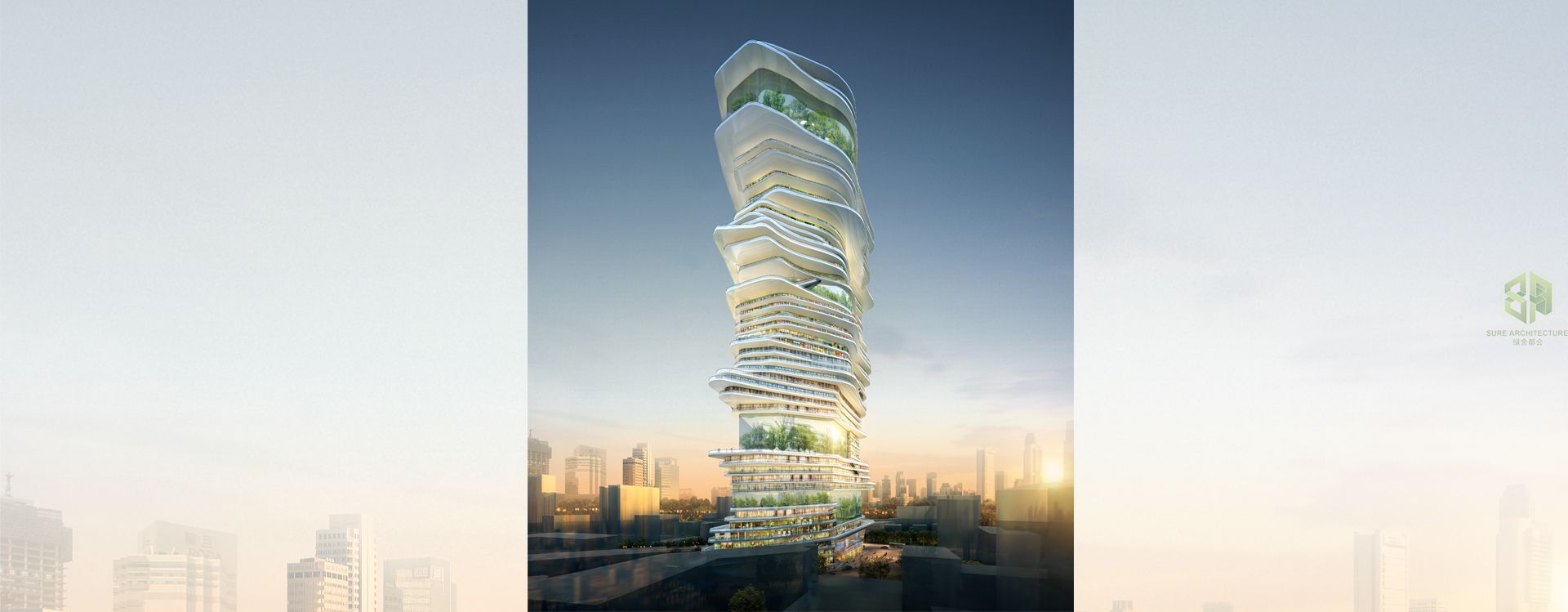
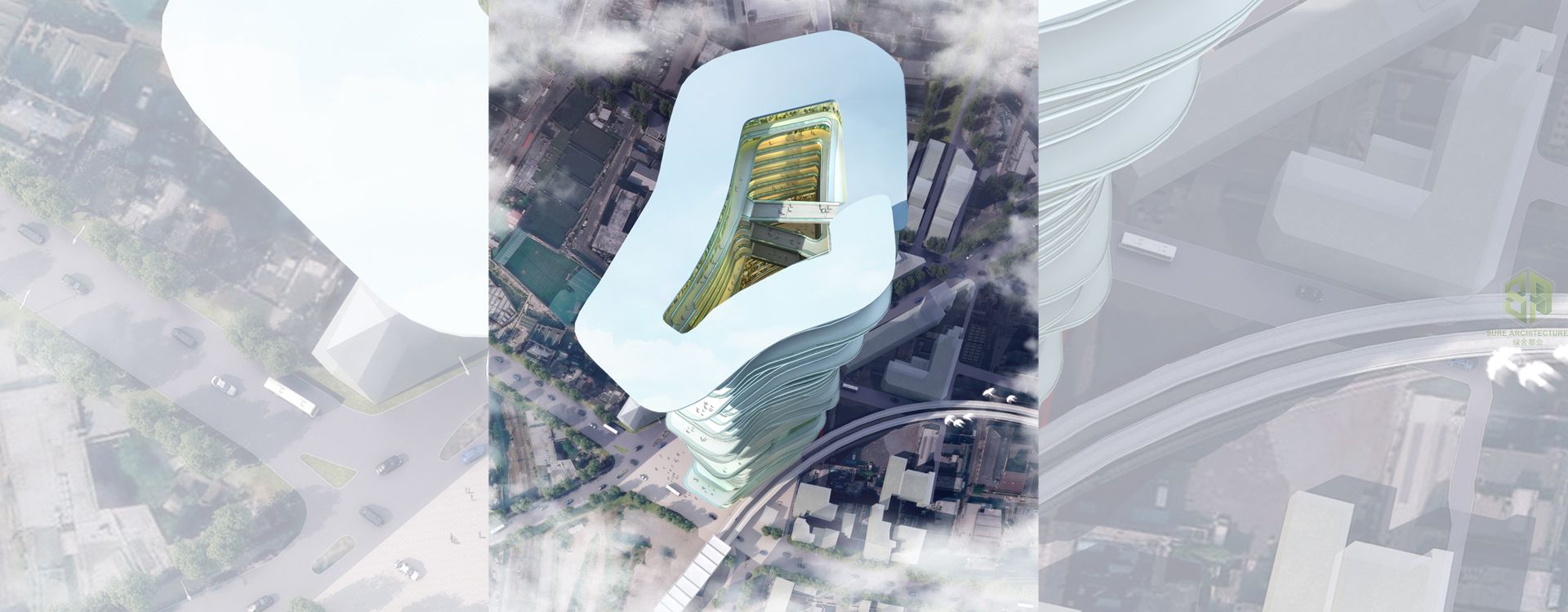
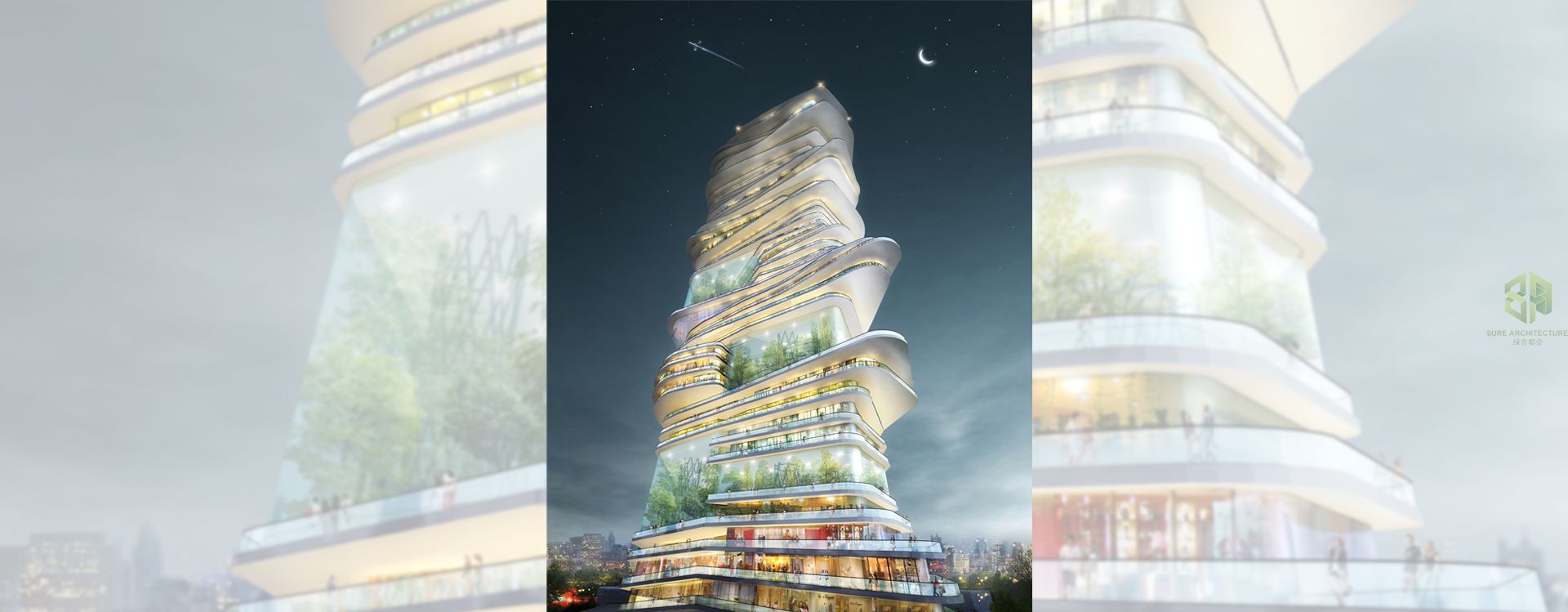
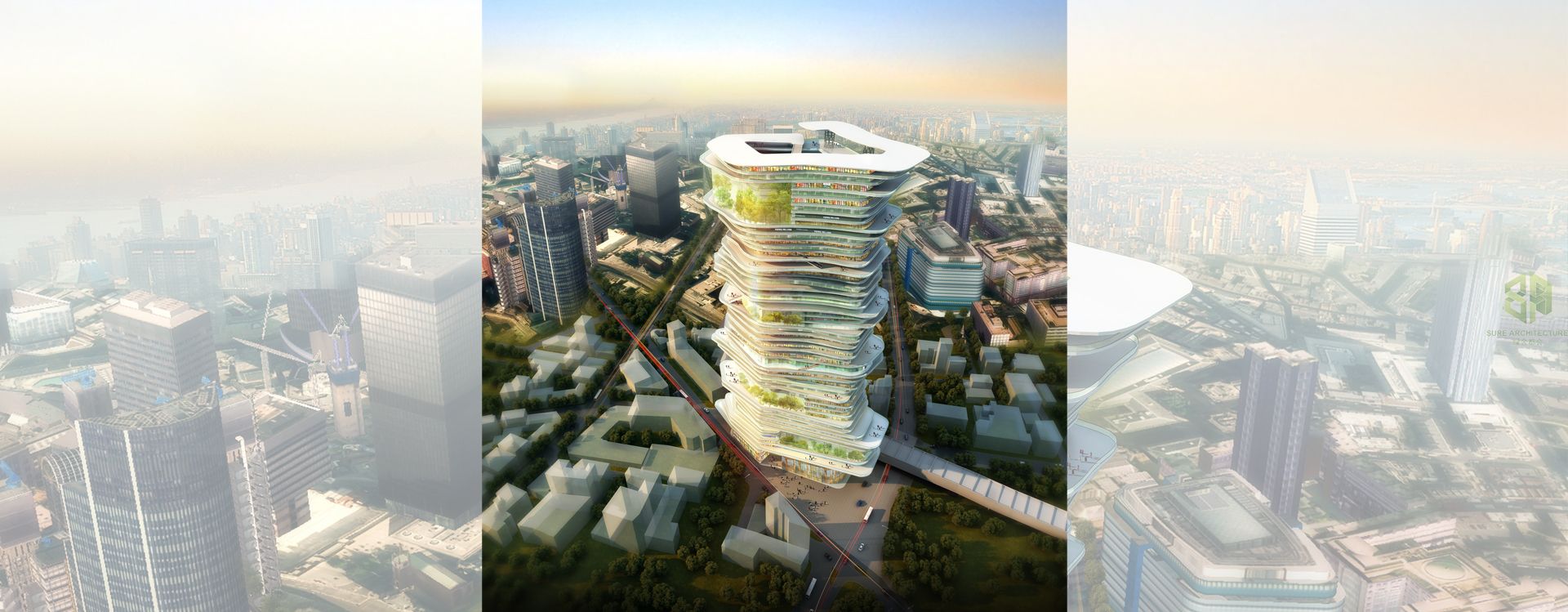
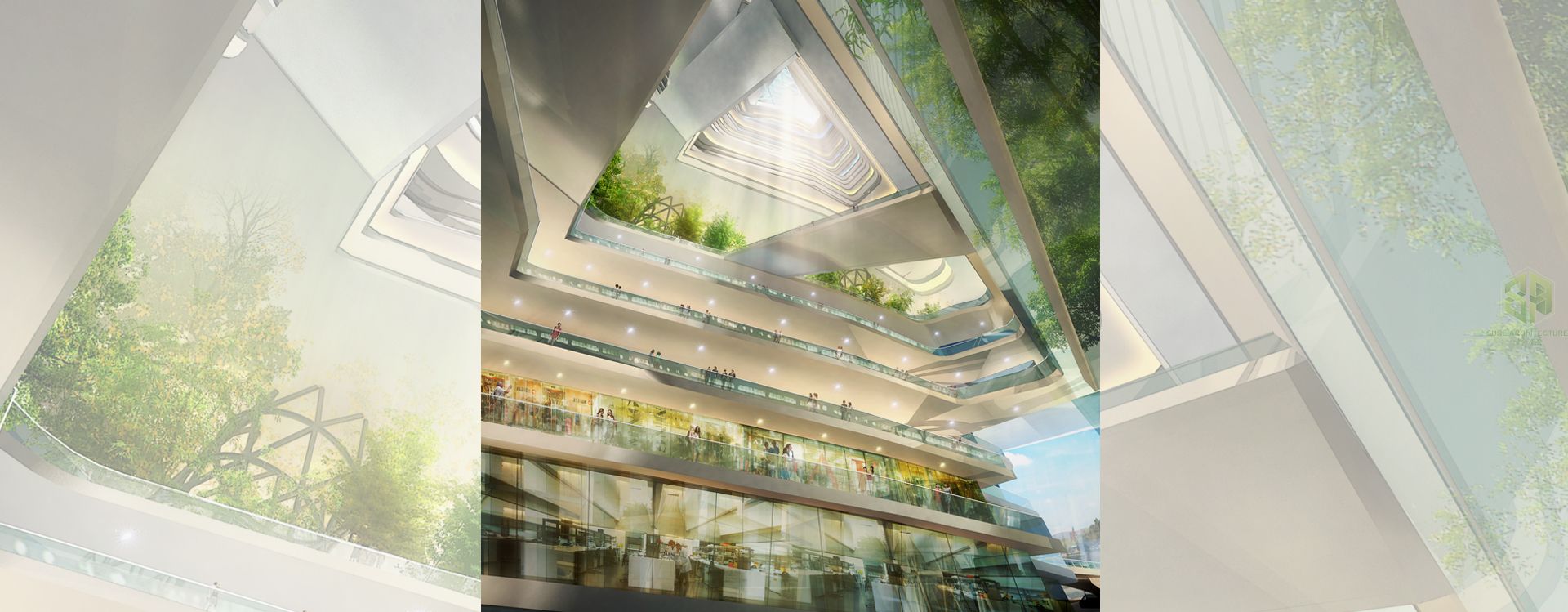
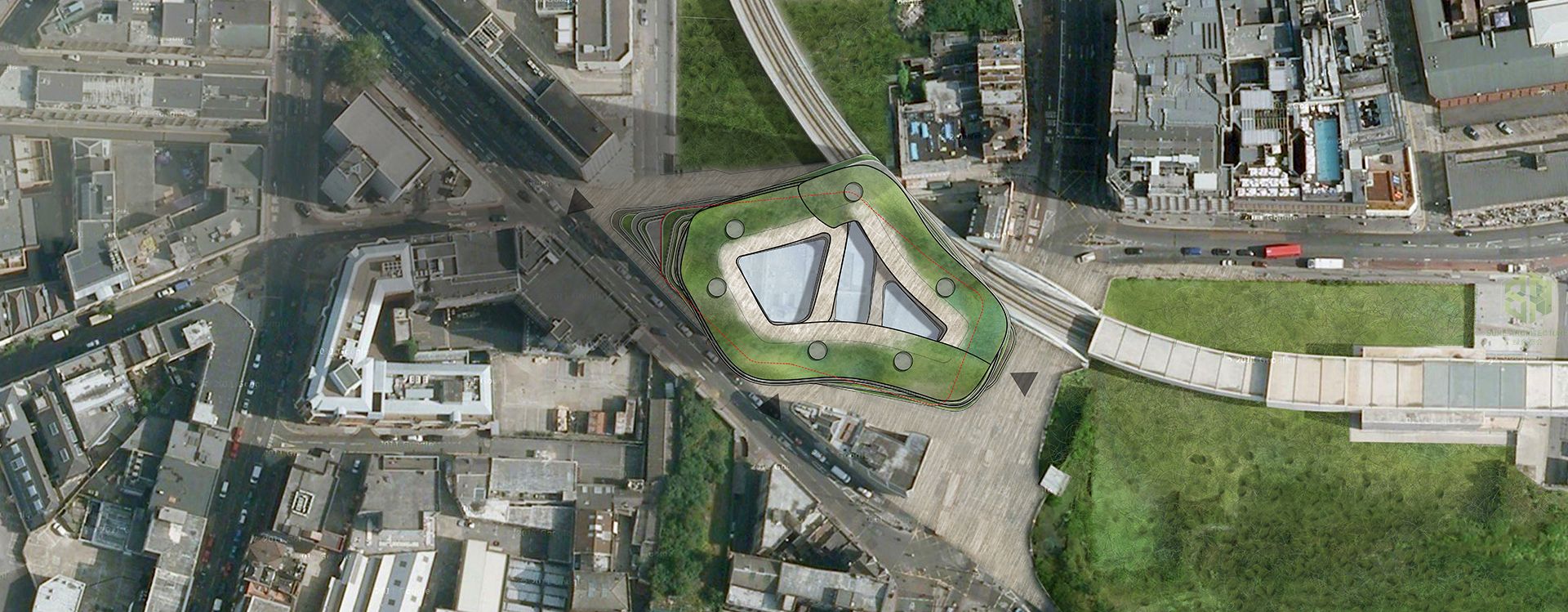

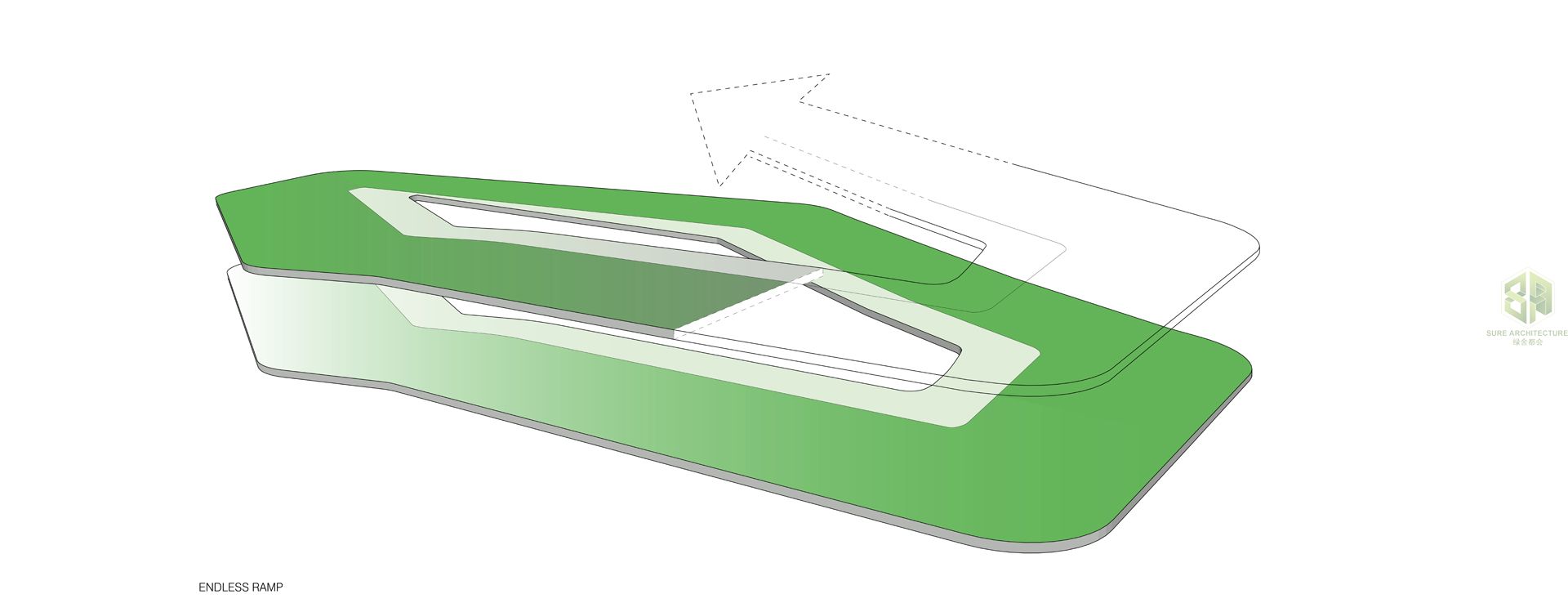
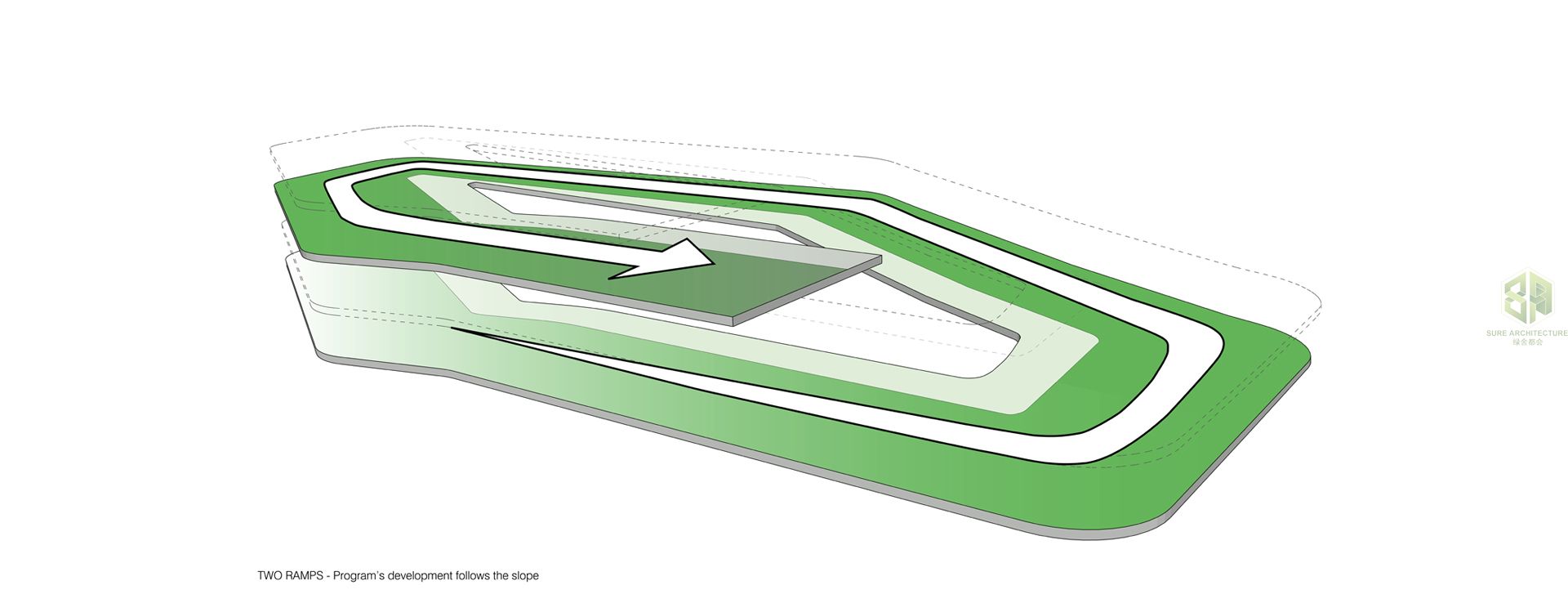
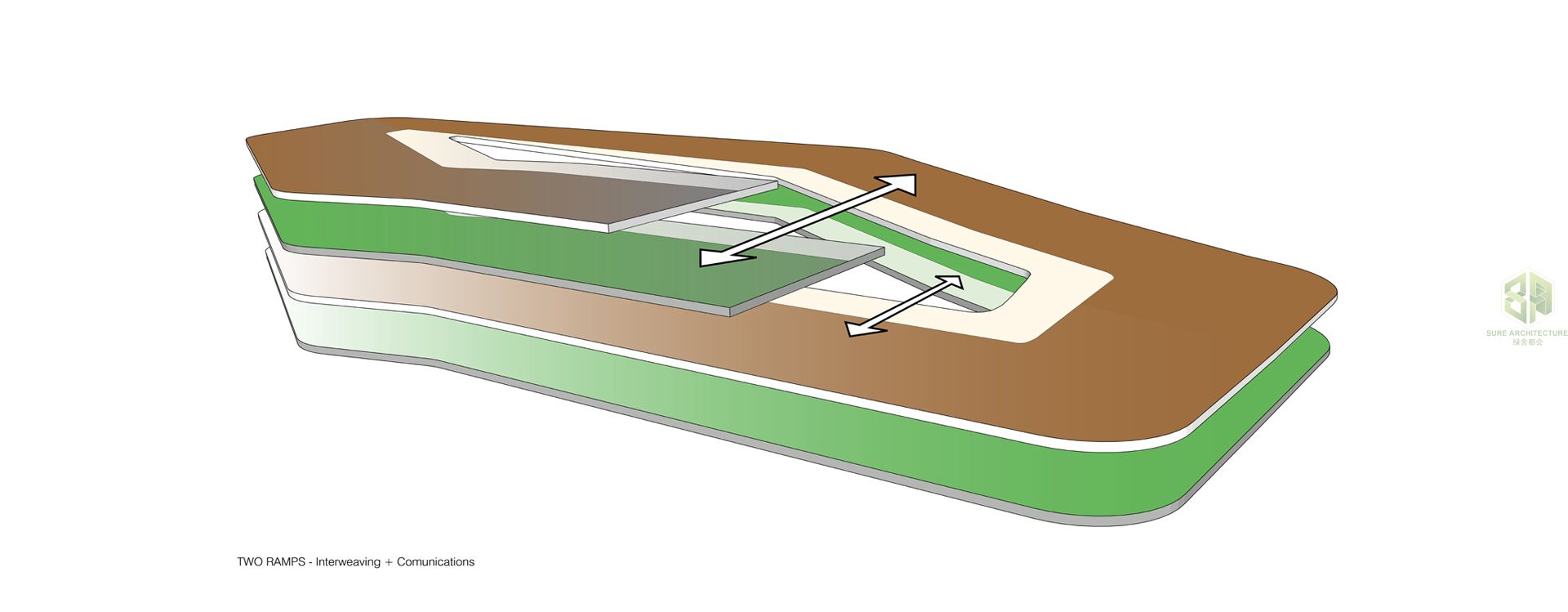

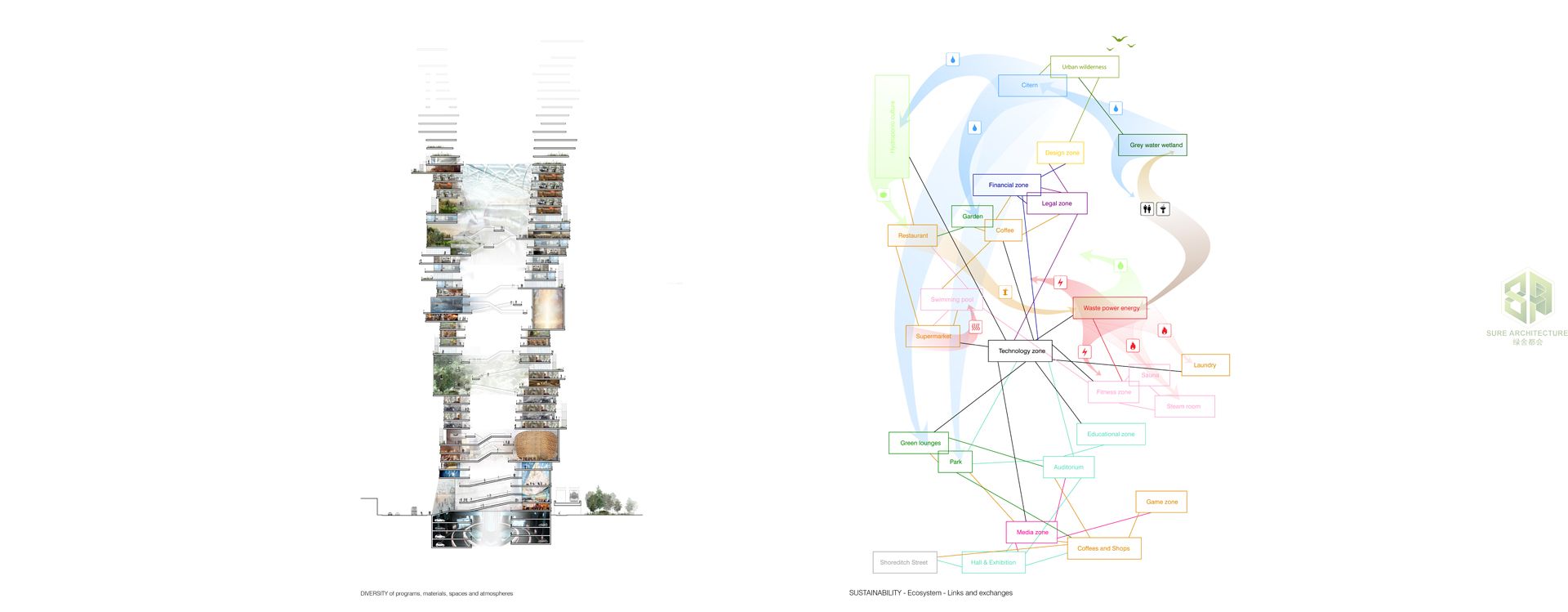
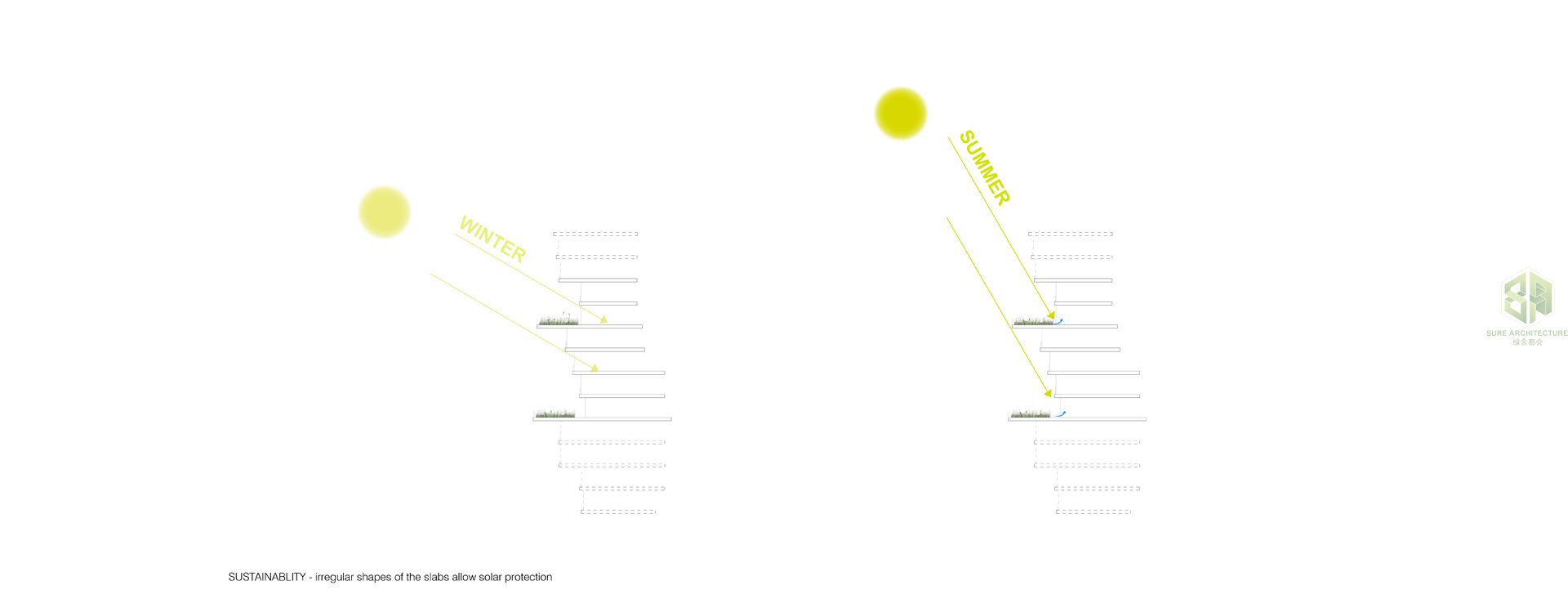
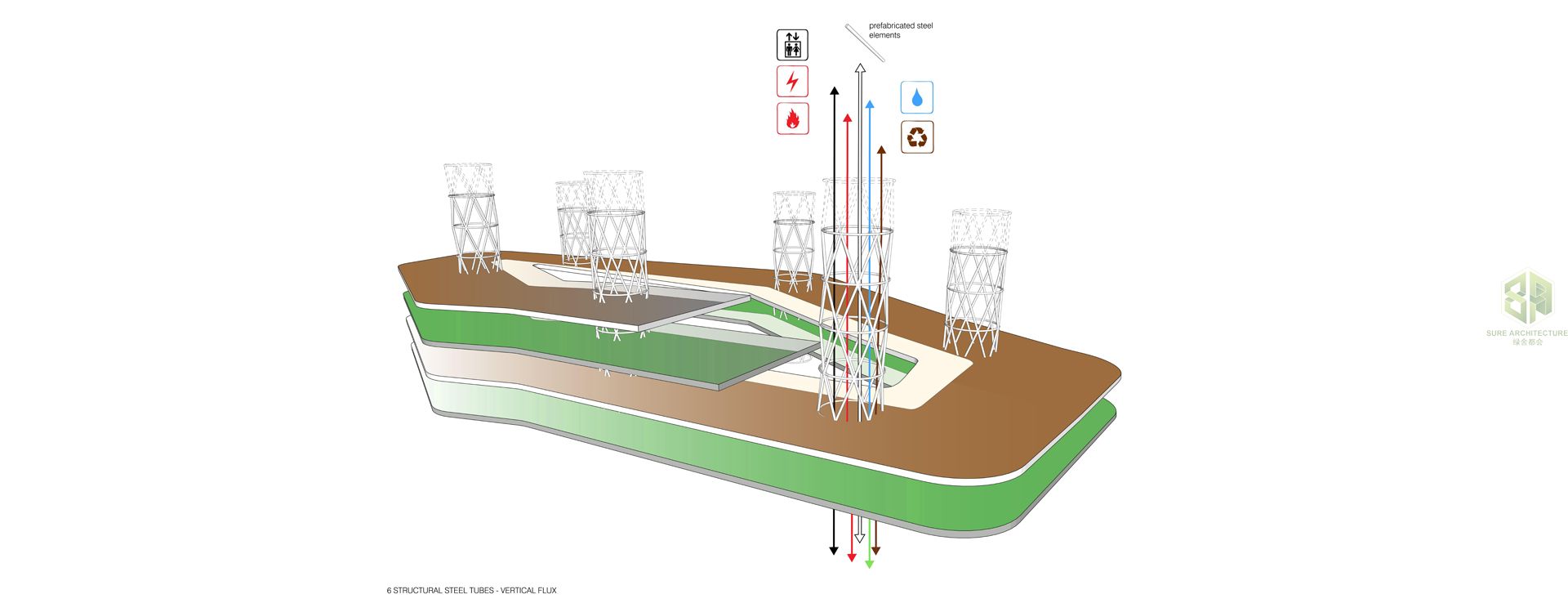
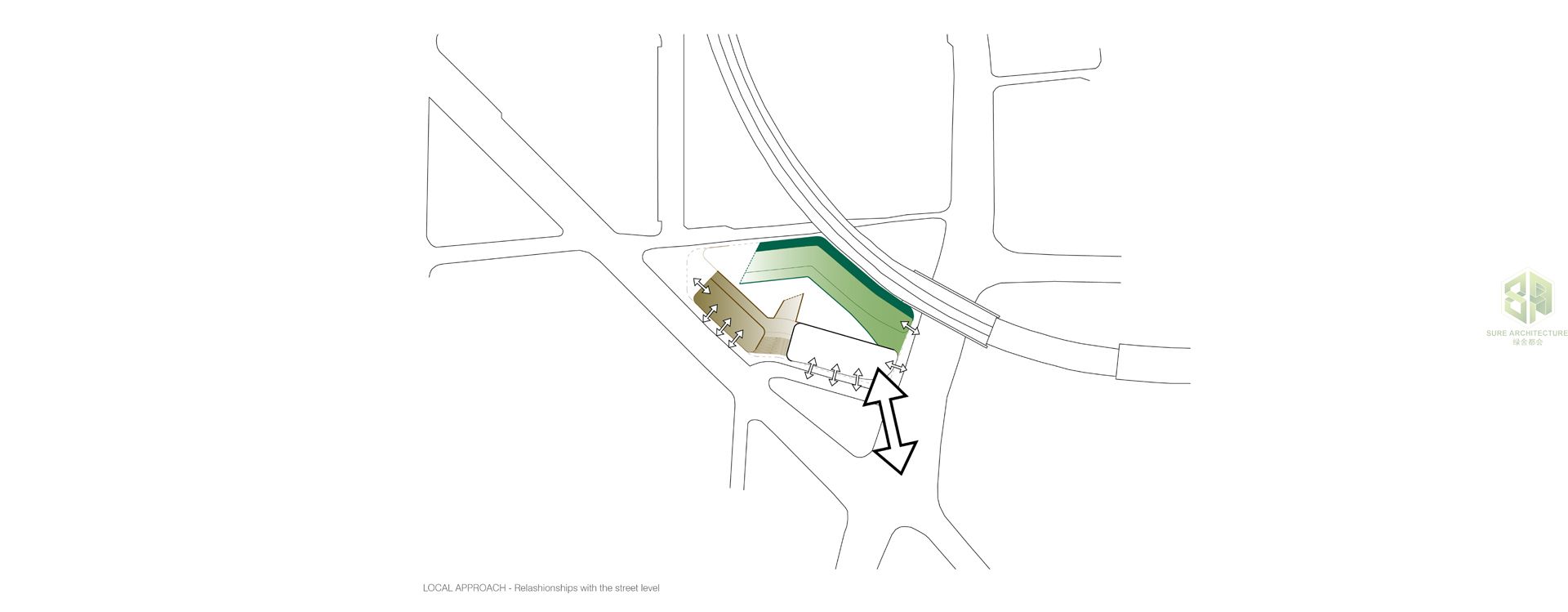
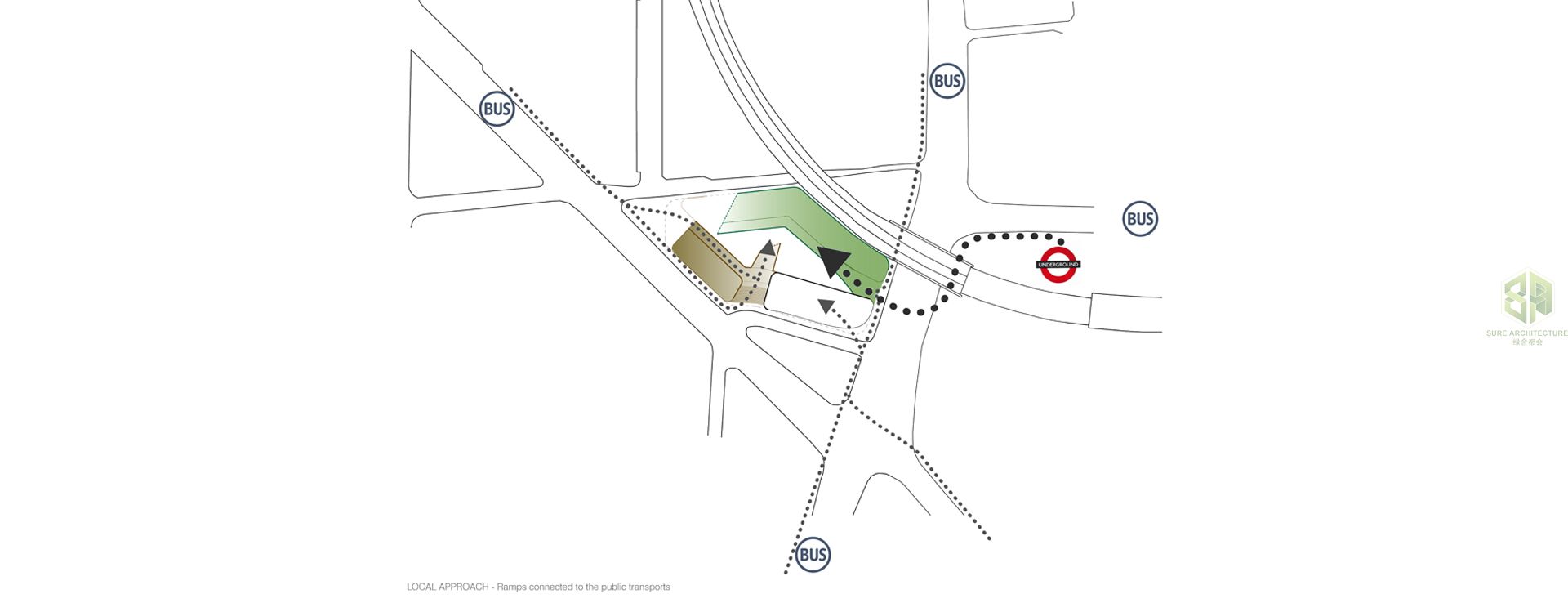
Site: Shoreditch, London, UK
Site Use - Site Area: 3510 sqm
Building Area: 3318 sqm
Gross Floor Area: 165 855 sqm
Building Coverage Ratio: 1.1 %
Gross Floor Ratio: 47 %
Stories above Ground: 55
Stories below Ground: 4
Structure: prefabricated steel tubes
Maximum Height: 1st Step : 200 m, 2nd Step : 250 m, 3rd Step : 300 m, etc.
Landscape Area: 192 sqm
Parking Lot: 520 parking spaces
Exterior Finish: stainless steel + glass + color glass + variety of materials depending of each program and firm
The City in Height is an alternative to the usual design of skyscrapers. Rather than superimposing one floor on top of another without real continuity; our project is thought of as two endless ramps circumrotating continually and rising gradually with a low gradient from the ground floor to the sky.
London’s streets can now be developed both horizontally and vertically in a continuous way.
There is no break anymore, neither between the street level and the skyscraper, nor between the skyscraper floors themselves. The goal of the design is to conceive an open building that is effective as an inviting and yet powerful symbol in all directions while being permeated by generosity and openness.
The different programs of the Tech City are settled continuously along the two ramps. They face each other, and are linked with bridges, mutually interweaving in a dynamic vertical and horizontal movement to increase exchanges, communications and interactions. The differentiated but interconnected spatial sequences of public spaces and entertainment spaces create a lively, discussion-rich setting for conversations, and societal inter-action and at the same time permit the creation of the vertical city.
Movement, views and relations in the site manifest themselves clearly as essential parameters to develop the architectural production. The entrance into the building is characterized by continuous spatial concentration and direct visual relationship. Spatial development and materiality define the path that leads from the public area into the heart of the building.
The irregular ramps directions create a variety of space and atmosphere. People discover the Tech City when they walk up the slopes through the commercial and vibrant streets, innovative and technologic spaces, huge parks and public places which communicate with the auditorium, indoor or outside areas, dynamic exchange places or intimate quiet areas. It creates a mix of complex and rich systems just like a real city.
This vertical city comprises of various plazas with individual characters to create high pedestrian movement throughout the tower. From the most public to the most private of spaces, the area allows for a spectacular view of the building.
Movement, spaces and light manifest themselves clearly as important and essential players in the overall production; providing the visitor a visually exciting environment, and a transition to the future.
It addresses the sustainable issues, areas of height sharing, and combines ideas about energy, water and waste with each other to create an advanced ecosystem. Loss is minimized while reuse is optimized. The skyscraper shape itself is designed to maximize passive energy and reduce artificial lighting, ventilation and cooling needs. Less energy will need to be produced!
The skyscraper is also shaped by local constraints and orientation, contracted at the bottom to keep distance with nearest buildings and dilated at the top to let in natural light.
Attention has been given to the ramps to facilitate access and communication between the skyscraper and the city of London. The city in height moves toward the main axes of the A10 and Shoreditch street leading to downtown London.
Six structural steel tubes support the two ramps and enclose the vertical flux (people, energy, waste, water and prefabricated modular steel elements). These elements are directly assembled on the top of the building to extend vertically as six pillars and allow the skyscraper growth within a green site. The concentrated structure and vertical flux allows open-plans and flexible spaces which can be adapted to a wide range of programs. Each firm, shop and institution is recognizable from their own facade and can settle and evolve according to their own needs. The rich variety of materials and textures reflect the mixture of the city in height.
The London skyline, and this organic skyscraper as a part of it, will transform, evolve and continuously grow together.